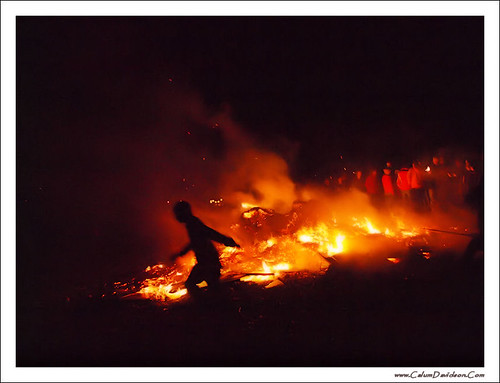It was a few years ago, and I’d just returned from Stornoway on a very bumpy morning November flight, wedged in the window seat by a very large lady and enveloped by her overpowering perfume. The cramped conditions, the turbulance and queasiness caused by her scent made reading the weekly Hebridean paper difficult, but two items caught my eye. It was with a jolt that I read that the death had been announced of the last survivor of the Iolair disaster on the 1st of January 1919, where hundreds of returning Lewis servicemen had drowned within sight of Stornoway after their ship sank just yards from the shore.
You see, on the previous day I’d stood at the WW2 fortifications at Arnish point, and looked at the rocks where she had gone down, and thought of them and my own Grandfather, whose ship had also floundered in the same storm, but further North in the Faroe Islands.
He had survived, just as he had survived three years of Atlantic convoys and U Boats, and Family stories have him staggering miles in a snow storm dressed only in trousers and a vest to raise the alarm, nursing a wound that would indirectly lead to his death by drowning ten years later off the East African Coast.
The second news item was a small announcement that, after eighty years of fund raising (yes eighty years) a war memorial would be raised in a small Uist township to its dead of both wars. It says a lot about the relative poverty of the Islands, and one townships collective memory and determination that a war memorial was being completed in the last year of the 20th Century.
So, back in the office and still feeling slightly queasy, I wandered down to a local shop to buy my lunchtime sandwich and yogurt. I was in the queue behind a slight elderly lady buying a very carefully selected mixture of sweets, obviously one of the few treats that she allowed herself, or her pension allowed. But it was when she opened her purse to pay for the purchase, that I saw – just for a flash – a creased, old sepia photograph of a young man, in the uniform of a Highland regiment of 1939, either the Camerons or Seathforths. He had a strong face, with a shy smile, and that glimpse told me her life story.
A Fiancé, a Husband, or a brother, one of the young men of the Highlands who had left for France with the 51st , and never come home, perhaps lost in the retreat or at St Valery, or died in a Polish POW camp, or like my Mothers Cousin, killed in the western desert at El Alamein. Or perhaps I was wrong, and he was sitting at home at that moment, in front of the fire hale and hearty with his P&J.
But no, she had the bird like movements that you only see in the very old, and the nervousness and shyness that goes with elderly ladies who have lived on their own for a very long time.
Someone who has lived with the legacy and loss of war for a very long time.
So its for her, and the ever smaller band of people like here, that we remember 11:00 on the 11th day of the 11th Month.








